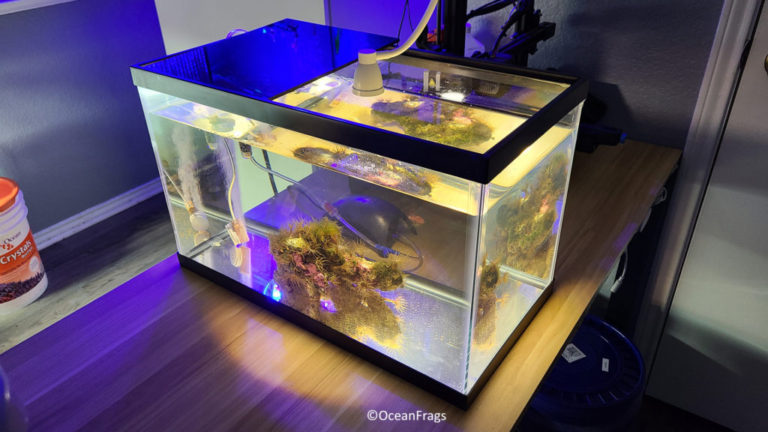
Pest Anemones
Peppermint shrimp are one of the best predators to combat aiptasia. In this experiment, I test how fast peppermint shrimp will eat aiptasia. If you have been in the saltwater aquarium hobby for any period of time you have most likely encountered aiptasia. These pest anemones are undoubtedly one of the most annoying parts of keeping a saltwater aquarium next to green hair algae. There are several methods you can use to get rid of aiptasia, some natural and some chemical. All of the methods will work to a degree but I\’ve personally always been a fan of the natural methods. They generally will not harm your tank if you do a little research first.
Peppermint Shrimp are natural predators
Some notable natural methods include Peppermint Shrimp, File Fish, Copperband Butterfly fish and Berghia Nudibranch. I have tried all of these with the exception of a Butterfly Fish. The most successful method of them all that have worked for me was adding a File Fish to my aquarium to eat the pest anemones. However, once the aiptasia were gone the file fish developed a taste for my Acan Lords and zoanthids.
Peppermint Shrimp vs Aiptasia Experiment
I recently started a 10-gallon standalone aquarium with 5 Peppermint Shrimp to see if they would help rid my rocks of all the aiptasia I neglected to control over the past year. This tank is only meant to serve as a cleaning station for my rock prior to adding the shrimp in my aquarium. I want to see if the shrimp will first of all actually eat the aiptasia. Then, if they pass that test throw in some cheap soft corals, maybe a mini zoanthid colony and even a cheap hammer coral to see if the peppermint shrimp will go after corals as well. If the corals survive the entirety of this test while the aiptasia is still present and after there is no longer any noticeable aiptasia, I may consider adding the shrimp to my tank.
Experiment Results
I have been taking pictures of the progress the shrimp have made since I started this little experiment. The aiptasia elimination process started out slow, but I believe this was due to the shrimp hanging out on the underside of the rock eating what they could find there first. After there was no more food left under the rock they started migrating towards to the top of the rock. I am not supplementing with any food, it’s strictly an aiptasia diet for these shrimps. If I start to feed them, they will become complacent and just wait for the easy meal. Here are some of the progress photos up to date of the tank.







If you want to make your own peppermint shrimp tank to get rid of aiptasia, here are all of the items I used:
- 10 Gallon Aquarium – If you time it right, you can pick one up for 50% off.
- Clamp light – Ambient room lighting will work just fine if you do not want a light.
- Air Pump – This is the best bang for your buck. It’s cheap and very quiet.
- Airline tubing – This is not the best airline but it’s the cheapest.
- Check Valves – This will save your tank and house if your power goes off.
- Sponge Filter – This will keep your tank cycled, and your shrimp will hang out on it.
- Air stone – I only use these to reduce the bubble size coming from the sponge filter.
- Heater – I prefer to use the smaller auto set heaters vs an adjustable heater.
- Acrylic Lid – I like to use this to avoid the salt creep created by the sponge filter.
You can also use some of the above items to culture phytoplankton and copepods if you wish, so dont toss them out.
Final Thoughts
In conclusion you can see the shrimp are doing a great job at eating away the aiptaisa. It’s been less than 2 weeks and the aiptasia is already about 90% gone. A side effect of all the aiptasia gone is I now see another ugly side of the rock that I will have to battle next; Valonia or more commonly referred to as bubble algae. I may evolve this experiment once the aiptasia is gone and setup another test tank with just an emerald crab to document how long it takes for the Valonia to disappear. After that I may also set up a third test tank and add a couple blue leg hermit crabs to document them eating the hair algae. Only time will tell where this rock will end up next. Check back often to follow along!
